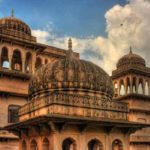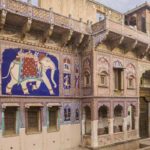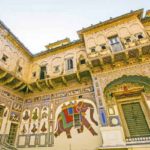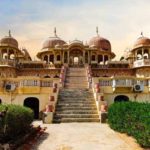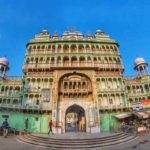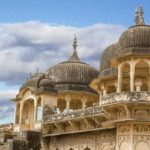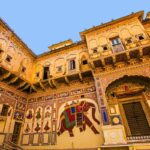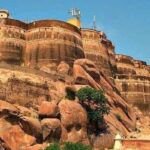Best Time To Visit Mandawa, Among the trio of Jhunjhunu, Sikar and Mandawa in the Shekhawati region of Rajasthan, Mandawa is a prominent town. This area, collectively, is called the Open Art Gallery. The town of Mandawa is popular around the world, apart from its fort, for its frescoes that can be found in mansions, temples and just about everywhere else.
Mandawa Tourism has been around since the 188th century. It started out as the Shekhawat Rajputs’ Thikana (estate) and eventually developed into a significant city in size and stature. Initiated by Thakur Nawal Singh, son of Shardul Singh, the fort at Best Time To Visit Mandawa. Frescoes, paintings that have Lord Krishna as a motif, intricate carvings and impressive mirror work decorate the castle. Valuable paintings and antiques also decorate the Durbar Hall.
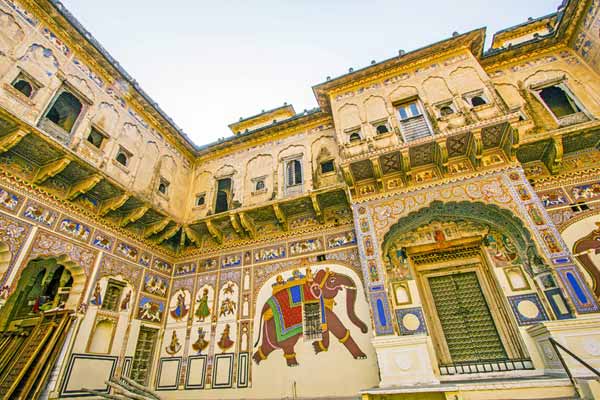
An significant part of the trading route to China and the Middle East was Mandawa. There were many rich traders staying here as a result. Fancy mansions, called havelis, were designed by these merchants and adorned with paintings on their walls and ceilings. These Havelis are now a part of Rajasthan’s cultural heritage.
There are hot summers here and cool winters, as in the rest of Rajasthan, so the Best Time To Visit Mandawa is between October and March. The closest airport is Jaipur, situated 167 km away. Jaipur is also the closest railroad, while Mandawa and the rest of the country are linked by good quality metal paths. Besides the Fort, which is now a Heritage Hotel, there are several budget hotels.
In and near Mandawa, there are many excursions as well. These include Nawalgarh, famed for its castle, Parsurampura with the Shekhawati region’s best-preserved and oldest paintings, Mukundgarh and Dundlod for their forts and Havelis, and Fatehpur for their havelis.
Best Time To Visit Mandawa
The Best Time To Visit Mandawa is to enjoy sightseeing and enjoying the outdoors between October and March, when the weather is good.
The summer months are exceptionally hot from May to June and are thus best avoided, as the temperature can reach a low of 26.8 ° C during the night to a high of 40 ° C during the day. To explore the area, the environment is not viable.
The monsoon season, which lasts from June to August, follows the summer months. This area gets normal rainfall, but you can not enjoy sightseeing or engage in any outdoor activities.
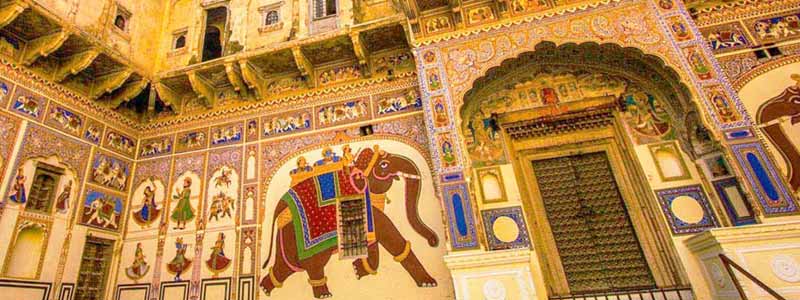
Mandawa in winter – From October till March
The Best Time To Visit Mandawa is from October to March; the weather remains slightly cold, but absolutely refreshing. Particularly during this time of year, the town looks and feels at its finest. Castle Mandawa, the Open Air Art Gallery and Hanuman Prasad Goenka Haweli are Mandawa’s main attractions. In winter, temperatures vary from 5 degrees Celsius to 20 degrees Celsius.
Mandawa in Monsoon – From July till September
Mandawa receives monsoon rains on average. The temperature varies from 25 degrees Celsius to 35 degrees Celsius during the monsoon.
Mandawa in summer – From April till July
In the summers, Mandawa gets very hot with temperatures rising up to 43 degrees Celsius and a minimum temperature of around 30 degrees Celsius during this time.
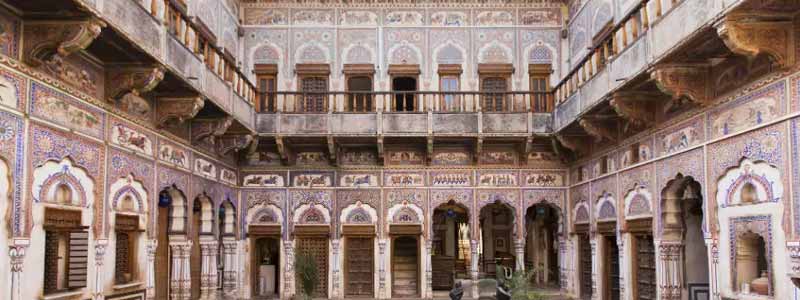
Tourist Attraction of Mandawa
Mandawa can be described as one of Rajasthan’s most off-beat places to explore. Located in the state’s Shekhawati District, until a century ago, Mandawa was one of the richest areas. The entire region is known for its havelis and Mandawa, with spacious accommodations and a relatively clustered cluster of havelis, is the most tourist friendly of them all. Almost all the beautiful Haveli’s are the major tourist places to visit in Mandawa. The city is often referred to as ‘Open Air Art Gallery,’ such is its passion for havelis, Best Time To Visit Mandawa.
Mandawa Fort
Mandawa Fort is the oldest of all the structures that you can find here, and perhaps the best maintained. The castle, established in the mid-18th century, is indicative of the prosperous days in which the city was located. For merchants coming all the way from the Middle East and China, Mandawa was a major trading post, so much so that the building of a fort became essential. With its steps, halls, decorated windows, courtyards and its wonderfully intricate frescoes and mirror works, the fort is an architectural and artistic delight. You can still do some exploring for a simple price, even though the fort is now a heritage hotel and some parts of it are totally tucked away.
Murmuria Haveli
This one shows intriguing frescoes of the inventions of the day, such as trains, vehicles, phones side by side with Indian Deities, the more modern of the all-famous Havelis. Like King George the Fifth and Jawaharlal Nehru meeting on its wall, the Haveli also has renowned individuals from the eastern and western world. Like the bulk of other Havelis, This one still has all the typical elements, such as courtyards and a labyrinth of rooms with intricate frescoes brimming with walls.
Hanuman Prasad Goenka Haveli
The Haveli is one of the first Havelis to show up, one of the few that is still in the hands of the Goenka Family that founded it during the 18th century. Unlike other havelis, here you can note the architecture and the work of art are distinct. The designs of the nearby Rajasthani cities affect the elements in this particular haveli more than any other havelis. There are carvings and sculptures decorating the magnificent mansion, in addition to the many frescoes, the most famous of which are the sculptures of Lord Shiva and his beloved accomplice, the bull Nandi.
Goenka Double Haveli
The double here applies to the haveli’s double entrance. The most remarkable aspect of the haveli is the exterior adorned with camels and ponies, which celebrates the tradition of Rajasthani again. There are paintings and numerous other works of art inside the vast framework that reflect different facets of Rajasthani life as witnessed by the people of the 1700s. A fresco portraying men and women in their typical attire is one such example.
Bansidhar Newatia Haveli
This haveli is no less intriguing, constructed during the early 20th century, when the city was at its declining level. It is one of the finest examples of artistic brilliance, in truth. The Haveli captures the transformation that much of India was experiencing at that time, the transition of globalisation. The frescoes present interesting scenes from the western world at this haveli From the view of the Indian community at the time, such as the Wright brothers’ first plane flying by an on-looking Indian woman. Although the old havelis are curious, this one would definitely keep you entertained in its own specific way.
Chokhani Double Haveli
This is one of the most exquisite of all Havelis. To fit the brothers who designed it, the two structures were created side by side. The haveli is in great shape, although compared to the other havelis, it must be acknowledged that it is fairly fresh. Unlike its counterparts in the reg, this haveli is adorned with lovely arabesques with floral designs on its walls and painted with rather mellow colours Rajput influence is expressed in the design of architecture and can be seen in its windows, courtyards and quarters, which show a rectangular form of architecture.
Open Air Art Gallery
Only wandering around Mandawa will be the most enjoyable part of the journey. During the golden age, there were so many havelis, some died, and many of them still exist. Many of the havelis have suffered tremendously over the years due to neglect, but with their distressed charm, these can still be seen. Only walking through the lanes and malls, On any haveli that is not locked up, you are likely to chance. A few of them have been turned into heritage hotels. These are basically the buildings that are better preserved. When it comes to costs, they are on the upper end, but it is all worth the experience.

